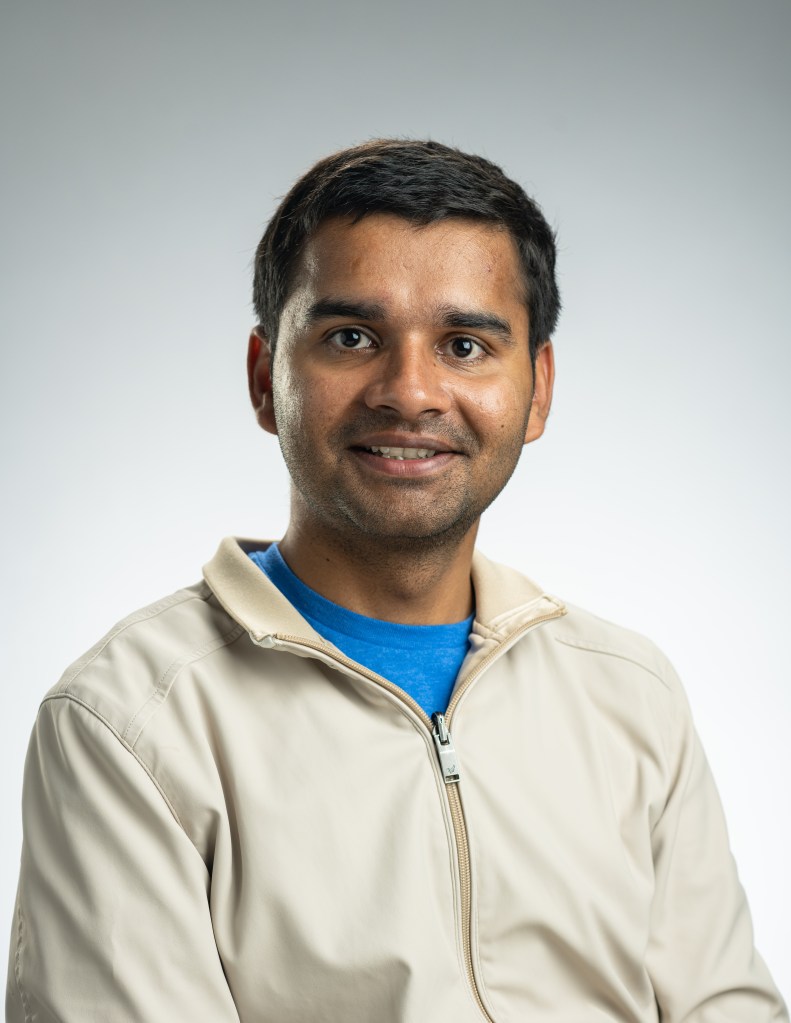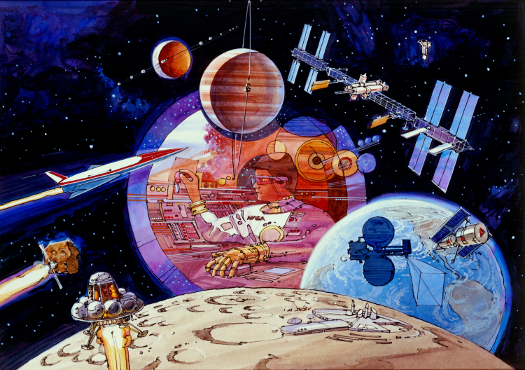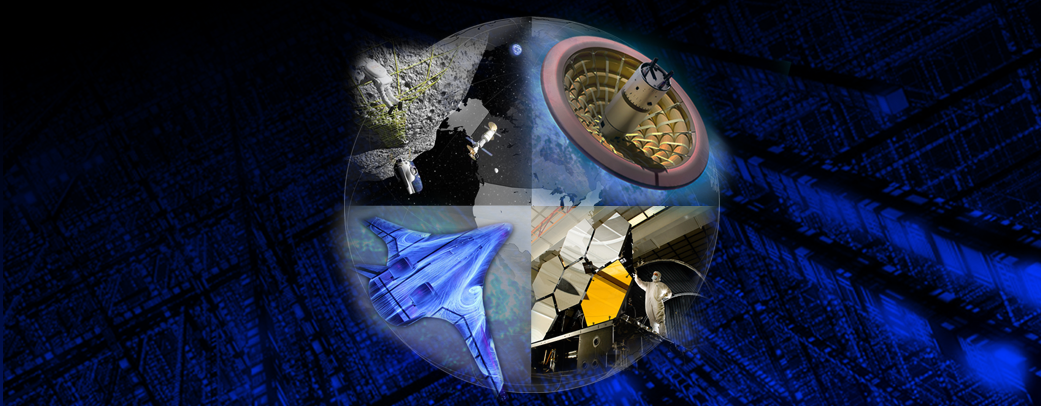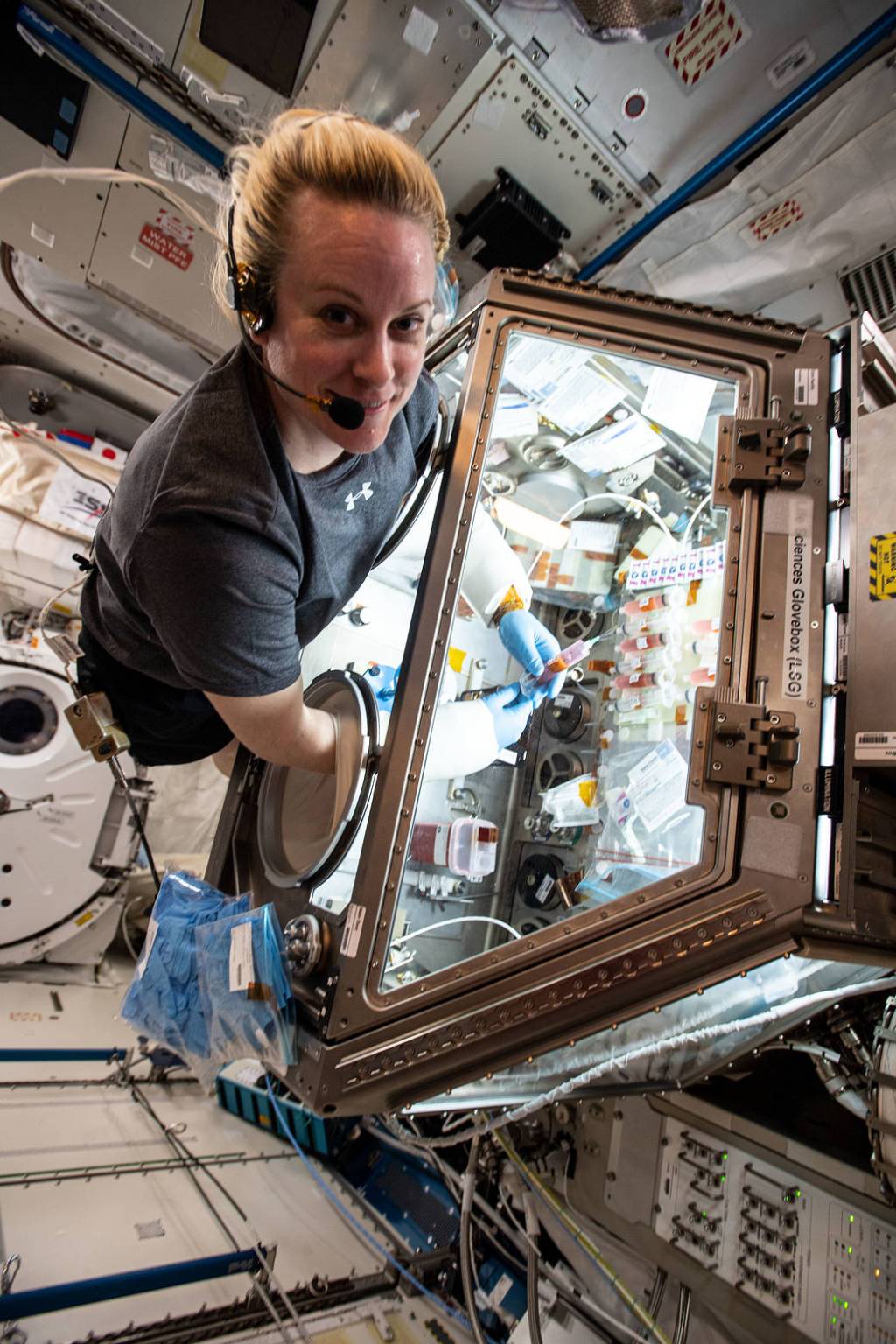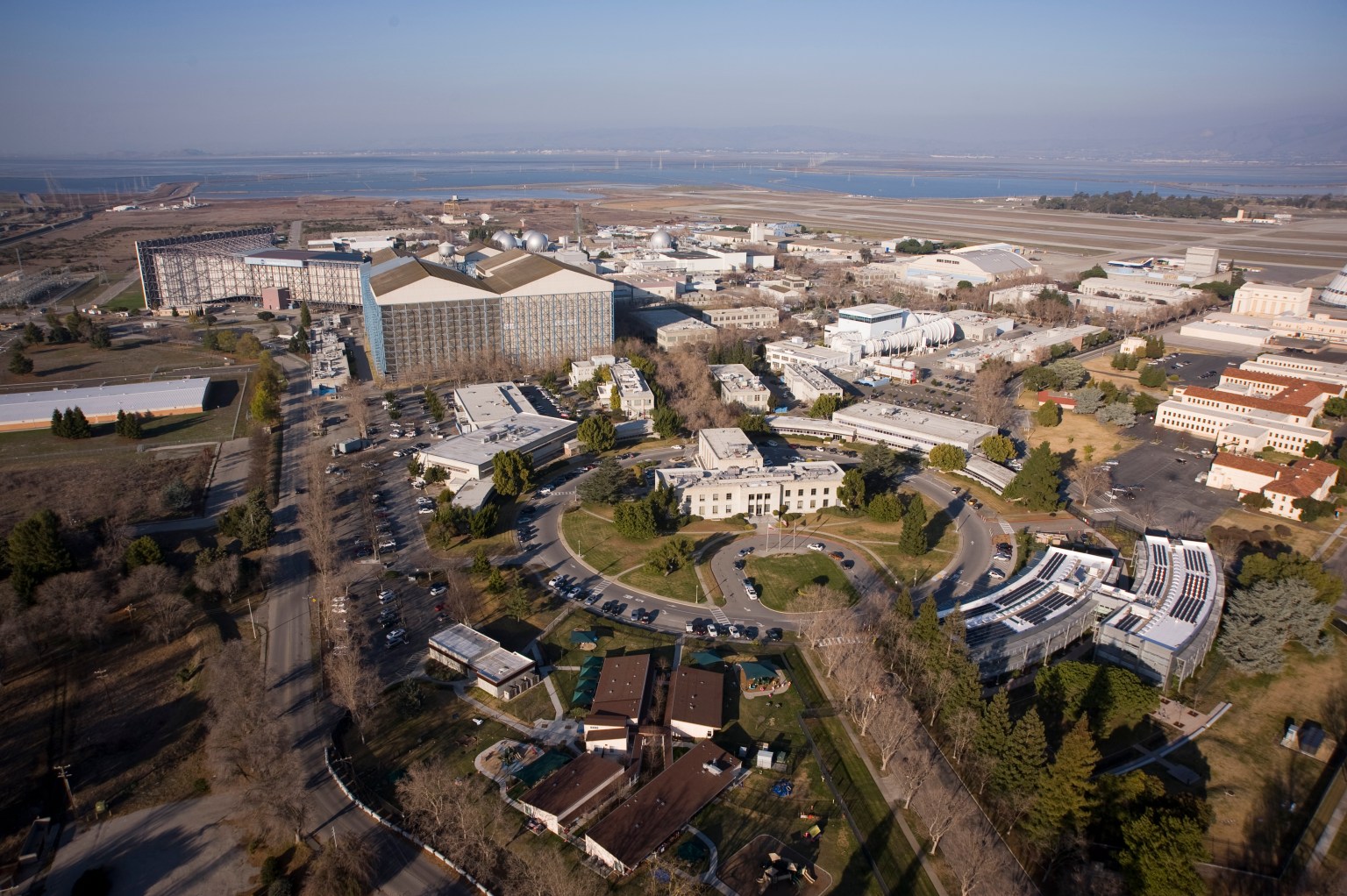2014 Summer Seminar Series
The 2014 Director’s Colloquium Summer Series provides a forum for distinguished scientists, engineers, leaders, entrepreneurs, and other inspirational speakers to present ideas that shape the future of aeronautics, space exploration, and the world.
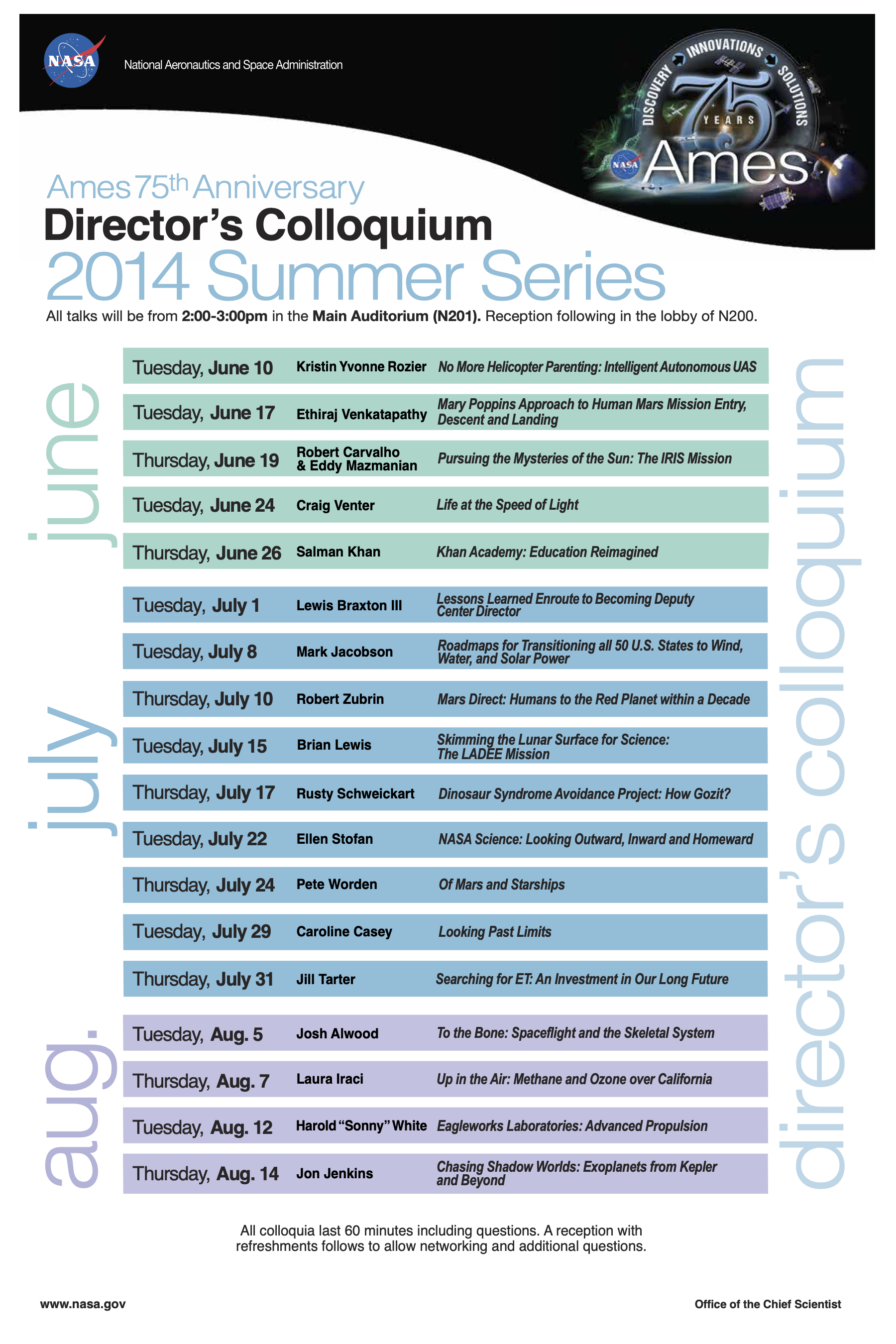 |
Kristin Yvonne Rozier
No More Helicopter Parenting: Intelligent Autonomous UAS
NASA Ames is leading an effort to assess the capabilities of Unmanned Aerial Systems (UAS) for civilian use. As an increasing number of sophisticated aircraft enter our airspace, there is a need to assure that their operations are safe above people and around other aircraft in the sky. Dr. Rozier describes how advanced new capabilities for System Health Management (SHM) assure mission safety and effectiveness under all conditions.
Abstract:
Safety is NASA’s top priority! The search for innovative new ways to validate and verify is vital for the development of safety-critical systems. Such techniques have been successfully used to assure systems for air traffic control, airplane separation assurance, autopilots, logic designs, medical devices, and other functions that ensure human safety.
Safety is important to ensure at all stages of a system’s lifetime, from design time to run time. We take a look at an exciting recent advancement in run time System Health Management (SHM) for totally autonomous Unmanned Aerial Systems (UAS) tasked with important missions like wild-fire surveillance and earthquake response. Our real-time, Realizable, Responsive, Unobtrusive Unit (rt-R2U2) meets the emerging needs for SHM of new safety-critical embedded systems like automated vehicles, UAS, or small satellites. SHM for these systems must be able to handle unexpected situations and adapt specifications quickly during flight testing between closely-timed consecutive missions, and must enable more advanced probabilistic reasoning for diagnostics and prognostics while running aboard limited hardware without affecting the certified on-board software. Come learn about the new technologies that can enable a fire-fighting UAS to fly!
Biography:
Dr. Kristin Y. Rozier is a research computer scientist in the Intelligent Systems Division of NASA Ames Research Center. She earned a Ph.D. from Rice University and B.S. and M.S. degrees from The College of William and Mary. Rozier’s advances in computation for the aerospace domain earned her the American Helicopter Society’s Howard Hughes Award, the American Institute of Aeronautics and Astronautics (AIAA) Intelligent Systems Distinguished Service Award and the Women in Aerospace Inaugural Initiative-Inspiration-Impact Award. She also has earned the Lockheed Martin Space Operations Lightning Award, the NASA Group Achievement Award, the Society for Women Engineers (SWE) Above and Beyond Award, and Senior Membership to IEEE, AIAA, and SWE. Rozier serves on the AIAA Intelligent Systems Technical Committee, where she chairs both the Publications and the Professional Development, Education, and Outreach (PDEO) subcommittees. She has served on the NASA Formal Methods Symposium Steering Committee since working to found that conference in 2008. In her spare time, she enjoys ballet, tap dancing and long-distance cycling.
Ethiraj Venkatapathy
Mary Poppin’s Approach to Human Mars Mission Entry Descent and Landing
Every NASA spacecraft that has entered another planet’s atmosphere or returned to land on Earth, uses technologies developed at NASA Ames. In pursuit of a human mission to Mars, an innovative deployable reentry system has been conceived. Dr. Ethiraj Venkatapathy explains how this technology will allow for a safer entry, descent and landing on the red planet.
Abstract:
NASA is investing in a number of technologies to extend Entry, Descent and Landing (EDL) capabilities to enable Human Missions to Mars. These technologies will also enable robotic Science missions. Human missions will require landing payloads of 10¹s of metric tons, not possible with today’s technology. Decelerating from entry speeds around 15,000 miles per hour to landing in a matter of minutes will require very large drag or deceleration. The one way to achieve required deceleration is to deploy a large surface that can be stowed during launch and deployed prior to entry. This talk will highlight a simple concept similar to an umbrella. Though the concept is simple, the size required for human Mars missions and the heating encountered during entry are significant challenges. The mechanically deployable system can also enable robotic science missions to Venus and is also equally applicable for bringing back cube-satellites and other small payloads. The scalable concept called Adaptive Deployable Entry and Placement Technology (ADEPT) is under development and is the focus of this talk.
Biography:
Dr. Ethiraj Venkatapathy is the Chief Technologist for the Entry Systems and Technology Division at NASA Ames Research Center. Prior to joining NASA in 2003, Dr. Venkatapathy was the President and Director of Research for ELORET Corporation with over 100 employees specializing in computational engineering sciences, and thermal protection and nano-technology development in support of NASA Missions. His affiliation with NASA Ames started with his Ph.D. thesis work as a student at Iowa State University (1977-1981) on the development and application of computational fluid dynamic solvers to predict hypersonic flow around the Shuttle Orbiter prior to the very first Space Shuttle flight. He has authored and co-authored over 150 publications and has presented his work in national and international meetings and institutions. Currently, he leads the game changing TPS materials development project funded by the Space Technology Mission Directorate as its Project Manager. He is a co-inventor and currently the Principal Technologist for the ADEPT, a mechanically deployable concept, an innovative entry system technology to enable human Mars missions and robotic Venus science missions.
Robert Carvalho
Pursuing the Mysteries of the Sun: The IRIS Mission
The sun is the core of our existence in the solar system. The IRIS observatory, launched on June 26, 2013, is solving the mysteries of how energy moves through the lower levels of the solar atmosphere. There are many components that are critical to the overall success of a science mission, one such component is spacecraft operations. As flight controllers for the mission, Robert Carvalho and Eddy Mazmanian discuss IRIS operations and science.
Abstract:
Pursuing the Mysteries of the Sun: The Interface Region Imaging Spectrograph (IRIS) Mission. Flight controllers from the IRIS mission will present their individual experiences on IRIS from development through the first year of flight. This will begin with a discussion of the unique nature of IRIS’s mission and science, and how it fits into NASA’s fleet of solar observatories. Next will be a discussion of the critical roles Ames contributed in the mission including spacecraft and flight software development, ground system development, and training for launch. This will be followed by experiences from launch, early operations, ongoing operations, and unusual operations experiences. The presentation will close with IRIS science imagery and questions.
Biographies:
Robert Carvalho is a Flight Controller and Ground Data System Systems Engineer for the IRIS mission, and has been working on IRIS since 2010. Robert is also working similar roles on the upcoming Resource Prospector mission. He has worked at Ames for 21 years, including supporting mission proposals, the Constellation program, Astronaut training systems, and the Columbia Accident Investigation Board. He has long been a space enthusiast, and looks forward to the exciting new things that NASA is doing. Robert has a Bachelor’s in Computer Engineering from Santa Clara University (1995) and a Graduate Certificate in Space Systems Engineering from Stevens Institute of Technology (2009).
Eddy Mazmanian has been at NASA Ames since 2006 where he started as a Summer Intern. He has been involved with several interesting activities at Ames including the development and testing of payloads for the International Space Station, Unmanned Aerial Vehicles, and a lunar rover. Most recently, he has supported the IRIS Mission both at Lockheed Martin and Ames for over four years and is currently a Flight Controller for the mission. He received his Bachelor’s degree from San Francisco State University and Master’s degree from Santa Clara University, both in Electrical Engineering. He likes to read, play basketball, play the violin, and perform with his family band.
Craig Venter
Life at the Speed of Light
Human deep space exploration missions require a thorough understanding of the prolonged environmental effects on life. The use of genomics and synthetic biology will transform such missions by reducing the overall risk and mass needed to sustain crew health in space. As the lead Center for space biology and synthetic biology, NASA Ames is in pursuit of these challenges. Regarded as one of the leading scientists in genomic research of the 21st century, Dr. J. Craig Venter speaks about the profound impacts these new tools will have on human’s existence on Earth and beyond.
Abstract:
In 2010, J. Craig Venter and his team at the Venter Institute became the first to successfully construct ‘synthetic life” putting humankind at the threshold of the most important and exciting phase of biological research, one that will enable us to actually write the genetic code for designing new species that can be used in many ways for the betterment of mankind. The science of synthetic genomics will have a profound impact on human existence, including new chemical and energy generation, human health and medical advances, clean water and food production, positive environmental impact, and possibly even our evolution. In Life at the Speed of Light, Venter presents a fascinating and authoritative study of this emerging field from the inside detailing its origins, current challenges and controversies, and projected effects on our lives. This scientific frontier provides an opportunity to ponder a new the age-old question “What is life?” Life at the Speed of Light is a landmark work, written by a visionary at the dawn of a new era of biological engineering.
Biography:
J. Craig Venter is a biologist renowned for his contributions in sequencing the first draft human genome in 2001, the first complete diploid human genome in 2007 and construction of the first synthetic bacterial cell in 2010. He is founder, chairman and CEO of the J. Craig Venter Institute (JCVI), founder and CEO of the company, Synthetic Genomics Inc (SGI) and a co-founder and CEO of Human Longevity Inc (HLI).
He and his teams are focused on a variety of projects and programs including: synthetic genomic research and the application of these advances to develop new biofuels, vaccines and food and nutritional products; continued analysis of the human genome including the human microbiome, and discovering and understanding genetic diversity in the world’s oceans. Dr. Venter is a recipient of the 2008 National Medal of Science and is a member of the National Academy of Sciences. He is the author of Life at the Speed of Light: From the Double Helix to the Dawn of Digital Life (Viking, 2013) and A Life Decoded: My Genome: My Life (Viking, 2007).
Salman Khan
Khan Academy: Education Reimagined
The Khan Academy is revolutionizing the way students learn with free online educational materials available to learners worldwide. NASA and Khan Academy recently debuted a series of tutorials to increase student interest in science, technology, engineering and mathematics, or STEM. Since the agency’s inception in 1958, NASA has been using its discoveries to inspire students across the world. Founder of the Khan Academy, Salman Khan talks about how he has reimagined the way education is done.
Abstract:
In 2004 as a side project, Khan began tutoring his young cousin in math, communicating by phone and using an interactive notepad. By 2006, word got around and Khan was tutoring 15 family friends and cousins as a hobby. To better scale, he began writing software to give his cousins practice and feedback in mathematics. To complement this software, he also began posting videos of his hand-scribbled tutorials on YouTube. Demand took off, and in 2009, when the practice problems and instructional videos were reaching tens of thousands of students per month, he quit his day job to commit himself fully to the not-for-profit Khan Academy. The Khan Academy website now provides a self-pacing guided learning experience with over 100,000 practice exercises and 5,000 instructional videos covering everything from basic arithmetic to college level science and economics. It’s the most-used library of educational lessons on the web, with over 10 million unique students per month, over 300 million lessons delivered, and over a billion exercises completed. Over 200,000 educators around the world are also using Khan Academy to help build student mastery of topics and to free up class time for dynamic project based learning. Khan has been profiled by 60 Minutes, featured on the cover of Forbes Magazine, and recognized as one of TIME Magazine’s “100 Most Influential People in the World”. In late 2012, Khan released his book The One World Schoolhouse: Education Reimagined.
Biography:
Sal Khan is the founder of the Khan Academy (khanacademy.org), a nonprofit with the mission of providing free, high-quality education for “anyone, anywhere” in the world. Khan was born and raised in New Orleans, Louisiana. Khan graduated from MIT in 1998 with three degrees: two bachelor of science degrees in mathematics and electrical engineering/computer science; and a master of science degree in electrical engineering. He began his career working in technology and later earned his MBA at Harvard Business School. Khan then became an analyst at a Boston based hedge fund which later relocated to Palo Alto in 2005.
Lewis Braxton III
Lessons Learned Enroute to being Deputy Center Director
There is often not a clear pathway to becoming a senior leader in any given organization. The narrative of such a journey can take on countless forms. Lewis Braxton III is the Deputy Center Director at NASA Ames Research Center with day-to-day management responsibility for well over 2,500 civil service employees and support service contractors. With nearly 40 years experience in NASA, With nearly 40 years of experience at NASA, Mr. Braxton shares his stories, illuminating on the many lessons learnt.
Abstract:
Mr. Braxton’s, “Lessons Learned Enroute to Becoming Center Deputy Director” will take you on a journey of his successful career through the lens of an African American. You will gain insights to his success as he shares the wisdom he gained through personal and professional experiences. He will walk you through his early childhood, education, NASA internship at Dryden Flight Research Center (DFRC), and his transition to Ames as he developed and matured into a senior leader. Mr. Braxton will also provide a special focus on his CFO and Deputy Director roles.
Biography:
Lewis S. G. Braxton III is the current Deputy Center Director at NASA’s Ames Research Center. In that capacity, he serves as the government equivalent of a Chief Operating Officer with day-to-day management responsibility for a large organization with over 2,500 civil service employees and support service contractors and an annual operating budget approaching $900 million. He is a senior planning and policy strategist and shares, with the Director, in leading program and mission for NASA Ames Research Center, one of the nation’s premiere research laboratories, whose break-through R&D and leading-edge technologies make virtually all of NASA’s and the nation’s aeronautics and space exploration missions possible.
Mr. Braxton has 39 years of experience at NASA, starting as a co-op student accountant trainee at NASA’s Dryden Flight Research Center and advancing steadily up the management chain to become Deputy Center Director at Ames in 2008.
Mr. Braxton earned degrees from the Harvard Graduate School of Business; Golden Gate University; the California State University, Fresno; and Merced Junior College. He is the recipient of numerous awards, including the Meritorious Executive Presidential Rank Award. He has been recognized in numerous group achievement awards and for his contributions to the Ames African-American Advisory Group.
Lew lives in the San Francisco Bay Area of Northern California, in the city of Fremont, located on the south/east end of the San Francisco Bay. He is married to a beautiful wife name Venoncia. They have three daughters, one son and five grandchildren.
Mark Jacobson
Roadmaps for Transitioning all 50 U.S. States to Wind, Water, and Solar Power
The current trend in climate change is of particular significance and is continuing at a rate that is unprecedented in the past 1,300 years. Dr. Jacobson’s work is of great interest and relevance to NASA Ames’s Earth Science research. In particular, his modeling of the connections between atmospheric composition and climate has provided guidance and inspiration to Ames measurements of aerosols and radiation, and his projections of future energy- and pollution-generation scenarios are relevant to Ames modeling of ecosystem evolution.
Abstract:
Global warming, air pollution, and energy insecurity are three of the most significant problems facing the world today. This talk discusses the development of technical and economic plans to convert the energy infrastructure of each of the 50 United States to those powered by 100% wind, water, and sunlight (WWS) for all purposes, namely electricity, transportation, industry, and heating/cooling, after energy efficiency measures have been accounted for. The plans call for all new energy to be WWS by 2020, ~80% conversion of existing energy by 2030, and 100% by 2050 through aggressive policy measures and natural transition. Resource availability, footprint and spacing areas required, jobs created, energy costs, avoided costs from air pollution mortality and morbidity and climate damage, methods of ensuring reliability of the grid, and impacts of offshore wind farms on hurricane dissipation are discussed. Air pollution reductions alone due to the plan would eliminate ~60,000 U.S. premature mortalities, avoiding costs equivalent to 3.2% of the United States GDP. Climate cost reductions are of similar order. The plans stabilize energy prices because fuel costs are zero. Please see: http://web.stanford.edu/group/efmh/jacobson/Articles/I/WWS-50-USState-pl…
Biography:
Mark Z. Jacobson is Director of the Atmosphere/Energy Program and Professor of Civil and Environmental Engineering at Stanford University. He is also a Senior Fellow of the Woods Institute for the Environment and of the Precourt Institute for Energy. He received a B.S. in Civil Engineering, an A.B. in Economics, and an M.S. in Environmental Engineering from Stanford in 1988. He received an M.S. and PhD in Atmospheric Sciences in 1991 and 1994, respectively, from UCLA and started on the faculty at Stanford in 1994. He develops and applies computer models to understand air pollution, global warming, and renewable energy resources. He has published two textbooks of two editions each and 140 peer-reviewed journal articles. He received the 2005 American Meteorological Society Henry G. Houghton Award and the 2013 American Geophysical Union Ascent Award for his work on black carbon climate impacts and the Global Green Policy Design Award for developing state and country energy plans. He served on an advisory committee to the U.S. Secretary of Energy, and appeared on the David Letterman Show to discuss converting the world to clean energy.
Robert Zubrin
Mars Direct: Humans to the Red Planet within a Decade
Achieving a human mission to Mars has been a fascination of humanity for some time. In the 1990s, Dr. Robert Zubrin proposed the “Mars Direct” mission architecture, using conventional rockets and Mars in-situ resources to establish a sustained human presence on Mars. NASA Ames Research Center is developing science and technology to make such missions and sustained presence possible.
Abstract:
In July 1989, on the 20th anniversary of the Apollo Moon landing, the first President Bush called for America to renew its pioneering push into space with the establishment of a permanent Lunar base and a series of human missions to Mars. While many have said that such an endeavor would be excessively costly and take many decades, a small team at Martin Marietta drew up a daring plan that could sharply cut costs and send a group of American astronauts to the Red Planet within ten years. The plan, known as “Mars Direct,” has attracted international attention and broad controversy, including coverage in such publications as Newsweek, Fortune, The Economist, Air and Space Smithsonian, the New York Times, the Wall Street Journal, the London Times, the Boston Globe and Izvestia. It has also been covered by the Discovery Channel, PBS, ABC, NBC, CBS, National Public Radio, and the BBC. Its principal author, Robert Zubrin, has presented it to such fora as the blue ribbon “Synthesis Group” headed by former Apollo astronaut General Thomas Stafford, the Augustine Committee, as well as to various government officials, including House Speaker Newt Gingrich, Senator John McCain, and NASA Administrators Dan Goldin, Mike Griffin, and Charles Bolden. Now, with the nation debating how to proceed with human space exploration, the “Mars Direct” plan is more relevant than ever: Can Americans reach the Red Planet in our time
Biography:
Robert Zubrin, formerly a staff engineer at Lockheed Martin Astronautics in Denver, is now president of his own company, Pioneer Astronautics. He holds masters degrees in aeronautics and astronautics and a doctorate in nuclear engineering from the University of Washington. He is the inventor of several unique concepts for space propulsion and exploration, the author of more than 200 published technical and non-technical papers in the field, as well the non-fiction books “The Case for Mars: The Plan to Settle the Red Planet and Why We Must” (Simon and Schuster 1996), “Entering Space” (Tarcher Putnam 1999), “Mars on Earth” (Tarcher Penguin 2003), “Energy Victory” (Prometheus Books, 2007) and “Merchants of Despair,” (Encounter Books, 2012). He is also the author of the novels “The Holy Land,” (Polaris Books, 2003) and “First Landing,” (Ace 2001), and the science-humor immigrant guidebook, “How to Live on Mars” (Three Rivers Press, 2008). He is a Fellow of the British Interplanetary Society and former Chairman of the Executive Committee of the National Space Society. He is the founder of the Mars Society; an international organization dedicated to furthering the exploration and settlement of Mars by both public and private means. In that capacity, he personally led the construction and operation of a human Mars exploration training station on Devon Island, an uninhabited island in the Canadian Arctic 900 miles from the North Pole. Prior to his work in astronautics, Dr. Zubrin was employed in areas of thermonuclear fusion research, nuclear engineering, radiation protection and as a high school science teacher.
Brian Lewis
Skimming the Lunar Surface for Science: The LADEE Mission
The Lunar Atmosphere and Dust Environment Explorer (LADEE) spacecraft impacted the Moon on April 17, 2014, capping a successful operational mission. LADEE not only skimmed the surface of the moon for science, but also successfully demonstrated two-way laser communications from lunar orbit. NASA Ames was responsible for spacecraft design, development, testing and mission operations, in addition to managing the overall mission. Brian Lewis, a systems engineer at NASA Ames, talks about LADEE from launch to impact.
Abstract:
On Sept. 6, 2013, a near-perfect launch of the first Minotaur V rocket successfully carried NASA’s Lunar Atmosphere and Dust Environment Explorer (LADEE) into a high eccentricity geocentric orbit. The launch, from NASA’s Wallops Flight Facility in Virginia, was visible from much of the eastern seaboard. Over the next 30 days, LADEE performed three phasing orbits, with near-perfect maneuvers that placed apogee at ever higher altitudes in preparation for rendezvous with the Moon. LADEE arrived at the Moon on October 6, 2013, during the government shutdown. With commissioning completed, LADEE lowered periapsis over the sunrise terminator on Nov. 10, and on Nov. 20 lowered apoapsis as well. On April 11, after its primary mission was complete, LADEE performed it’s final maneuver, placing it in a very low-altitude orbit that would yield a short period of highly valuable science while guaranteeing impact on the far side of the moon. On April 15, LADEE flew through a four hour lunar eclipse, demonstrating an ability to survive low temperatures and a deep drain on battery systems. LADEE ultimately impacted on the lunar surface between 9:30 pm and 10:22 pm PDT on April 17, 2014.
Biography:
Brian Lewis is a systems engineer at the NASA Ames Research Center. He is currently the lead system engineer for the BioSentinel project and previously acted as the spacecraft systems engineer and then spacecraft manager on the LADEE project. Prior to working at Ames, he was a systems engineer for The Aerospace Corporation in Los Angeles, Calif., where he worked on projects such as GPS III, the Mars Science Laboratory, and the Jupiter Icy Moons Orbiter. He has a B.S. and M.S. in mechanical engineering from Utah State University with a focus on thermal systems engineering and has been involved with spacecraft systems engineering for more than 14 years.
Rusty Schweickart
Dinosaur Syndrome Avoidance Project: How Gozit?
In its reach to the Moon, the Apollo missions were a symbol of humanities ability to achieve extraordinary results when a clear goal is prioritized. Humankind has continued its quest towards the stars in order to answer some of civilizations most basic and grandest questions. NASA Ames is involved in research and technology development to mitigate threats so large they question the very survival of our species. The 2013 Chelyabinsk meteor demonstrated that grave uncertainties exist pertaining to near-Earth objects (NEOs). Although the impact rate for dangerous asteroids is relatively low, the consequences of such an event are severe. Apollo Astronaut Rusty Schweickart, talks about our prospects of avoiding the same fate as the dinosaurs.
Abstract:
Schweickart will review the status of the global efforts to protect life on the planet from the devastation of large asteroid impacts. He will review both the technical and geopolitical components of the challenge of preventing future asteroid impacts. The technical elements of early warning and deflection have been the primary focus of the B612 Foundation, a California non-profit corporation (501c3) which he co-founded and led for 10 years, along with former astronaut Ed Lu, who currently leads the B612 work. While the Foundation initially focused its work on deflection techniques it currently dedicates its efforts to the higher priority early warning requirement via the Sentinel Infrared Space Telescope, which it plans to launch in 2018. Schweickart also led the Association of Space Explorers (ASE) initiative to mobilize the international community to develop a decision system for coordinated response to an asteroid impact threat. This work, currently led by former astronaut Tom Jones, has led to an ongoing United Nations effort to organize both analytic and operational structures among nations to assure a coordinated response to any potential impact threat. Schweickart will summarize where he believes the overall effort stands currently and whether or not we will be ready to protect life when, one day, the big one is incoming.
Biography:
Russell L. (Rusty) Schweickart joined NASA as one of 14 astronauts named in October 1963, the third group of astronauts selected. He served as lunar module pilot for Apollo 9, March 3-13, 1969, logging 241 hours in space. This was the third manned flight of the Apollo series and the first manned flight of the lunar module. During a 46 minute EVA Schweickart tested the portable life support backpack which was subsequently used on the lunar surface explorations. Schweickart co-founded the B612 Foundation with Ed Lu, and served as its chairman until 2011. He is the founder of the Association of Space Explorers (ASE) and served as president of ASE-USA. He also founded and chaired the ASE-NEO Committee, which, with its international Panel on Asteroid Threat Mitigation, produced and submitted to the United Nations Committee on the Peaceful Uses of Outer Space (COPUOS) the seminal report Asteroid Threats: A Call for Global Response. Subsequently, Rusty also co-chaired, along with astronaut Tom Jones, the NASA Advisory Council’s Task Force on Planetary Defense. From the late 1970s, Rusty was named by California Governor Jerry Brown to serve as Assistant for Science and Technology, and from 1979-1983, served as Chairman of the California Energy Commission. Subsequently, he was founder and CEO of several space and Internet startups.
Schweickart was born on 25 October 1935 in Neptune, NJ. He is married to Nancy Ramsey of West Hartford, CT. He has seven children and eleven grandchildren. He graduated from Manasquan High School, NJ; received his Bachelor of Science degree in aeronautical engineering 1956 and his Master of Science degree in Aeronautics–Astronautics 1963, both from the Massachusetts Institute of Technology.
Ellen Stofan
NASA Science: Looking Outward, Inward, Homeward
Ever since the dawn of humanity, people have looked up to the sky with wonder: What are those bright lights up there? Is there life out there? Can we reach out and touch them? In modern times, we have developed the science and technology to begin pursuing the answers to these questions. NASA Ames Research Center has been at the forefront in the development of research and technologies necessary to lead humanity in this quest. NASA¹s Chief Scientist, NASA’s Chief Scientist, Dr. Ellen Stofan, speaks about the Agency’s research that is pushing the boundaries of our knowledge concerning Earth, the Solar System, and the universe.
Abstract:
NASA science pushes the boundaries of our knowledge about Earth, the Solar System including our Sun, and the universe. Our studies of Earth are helping us to better monitor and model our changing climate, while exploring the planets of our solar system and planets around other stars helps to address the question- Are we alone? From research on the International Space Station into the effects of microgravity on humans, to characterizing the radiation environment between Earth and Mars and its potential effects on humans, to preparing to better understand the Martian surface as a human habitable environment, NASA is well on its way, working in conjunction with our international partners, to start the next phase of human exploration.
Biography:
Dr. Ellen Stofan was appointed NASA chief scientist on August 25, 2013, serving as principal advisor to NASA Administrator Charles Bolden on the agency’s science programs and science-related strategic planning and investments.
Prior to her appointment, Stofan was vice president of Proxemy Research in Laytonsville, Md., and honorary professor in the department of Earth sciences at University College London in England. Her research has focused on the geology of Venus, Mars, Saturn’s moon Titan, and Earth. Stofan is an associate member of the Cassini Mission to Saturn Radar Team and a co-investigator on the Mars Express Mission’s MARSIS sounder. She also was principal investigator on the Titan Mare Explorer, a proposed mission to send a floating lander to a sea on Titan.
Her appointment as chief scientist marks a return to NASA for Dr. Stofan. From 1991 through 2000, she held a number of senior scientist positions at NASA’s Jet Propulsion Laboratory in Pasadena, Calif., including chief scientist for NASA’s New Millennium Program, deputy project scientist for the Magellan Mission to Venus, and experiment scientist for SIR-C, an instrument that provided radar images of Earth on two shuttle flights in 1994. Stofan holds master and doctorate degrees in geological sciences from Brown University in Providence, R.I., and a bachelor’s degree from the College of William and Mary in Williamsburg, Va. She has received many awards and honors, including the Presidential Early Career Award for Scientists and Engineers. Stofan has authored and published numerous professional papers, books and book chapters, and has chaired committees including the National Research Council Inner Planets Panel for the recent Planetary Science Decadal Survey and the Venus Exploration Analysis Group.
Pete Worden
Of Mars and Starships
Some of humanity’s most extraordinary endeavors lie in scientifically and philosophically probing where we come from and if we are alone. The pursuit to find evidence of life in the universe is of paramount importance, as is determining where our civilization is going next. As humanity is on a pathway to become an interplanetary species, NASA Ames is conducting research that will enable such endeavors. Dr. Worden will illuminate on these pursuits.
Abstract:
Is there life elsewhere in our solar system? Where, and how, should we look for it? Will we bring life to the rest of our solar system? If so, where will we bring it, how will we get it there, and what kind of life will it be? What about the possibility of life in other star systems? Could we detect it? Could we become it? Could we create it? What technologies do we have in hand that addresses these matters, and what technologies must still be created? We will discuss these questions, and in particular we will discuss what NASA, and especially NASA Ames, is working on to answer them.
Biography:
Dr. Simon P. Worden (Brig. Gen., USAF, ret.) is the center director at NASA Ames Research Center where he leads a staff of nearly 2,500 civil servants and contractors, and oversees an annual budget of approximately $800 million providing the critical R&D support that makes NASA’s and the nation’s aeronautics and space missions possible. Prior to becoming Ames’ director, Dr. Worden was a research professor of Astronomy, Optical Sciences and Planetary Sciences at the University of Arizona where his primary research direction was the development of large space optics for national security and scientific purposes and near-Earth asteroids. Additionally, he worked on topics related to space exploration and solar-type activity in nearby stars. He is a recognized expert on space issues both civil and military. He has authored or co-authored more than 150 scientific technical papers in astrophysics, space sciences and strategic studies. Moreover, he served as a scientific co-investigator for two NASA space science missions.
Jill Tarter
Searching for ET: An Investment in Our Long Future
Is there life in the Universe besides Earth? This is one of the fundamental questions driving humanity to explore space. NASA Ames collaborates with the SETI institute on exploration missions such as Kepler and SOFIA. The SETI Institute mission is to explore, understand and explain the origin, nature and prevalence of life in the universe. Dr. Jill Tarter of the SETI Institute addresses the investments being made to discover extraterrestrial life.
Abstract:
Professor Philip Morrison once described SETI as the “archeology of the future.” That characterization is both complex and immensely profound. We are a very young technology in a very old galaxy; detection of another technological civilization will validate the proposition that it is possible to become an old technology. SETI marked it’s semicentennial as a scientific exploration in 2010.
Now that exoplanets have been discovered in such abundance and diversity, and Earth 2.0 is a reasonable expectation, it seems more relevant than ever to ask the “Are we alone?” question. What should we be doing to improve our capability to detect intelligent life beyond Earth? To date, technology has been our proxy for intelligence, and our searches have concentrated on electromagnetic radiation. Should we be emphasizing artifacts? Perhaps collaborating with programs now systematically trying to explore our local solar neighborhood to find small bodies on collision courses with Earth? Is there a case for genomic SETI? Should we consider other information-carrying particles in addition to photons? And if we do continue to emphasize EM signals, how do we improve our sensitivity to transient events, and what other portions of the spectrum can we explore? Is it time to start transmitting instead of just listening? There are lots of technical questions about how to move forward, but the most difficult question of all may be how do we integrate and support this vast, and potentially long-term endeavor into a world of short-term thinking? How do we justify continued investment in SETI?
Biography:
Jill Tarter holds the Bernard M. Oliver Chair for SETI at the SETI Institute in Mountain View, California, and serves on its Board of Trustees. Tarter received a Bachelor of Engineering in Physics from Cornell University and her Ph.D. in Astronomy from the University of California, Berkeley. She has led numerous SETI observational programs at radio observatories worldwide and helped construct and operate the innovative Allen Telescope Array in Northern CA. Tarter’s work has brought her wide recognition in the scientific community, including the Lifetime Achievement Award from Women in Aerospace and two Public Service Medals from NASA. She is an adjunct professor at the University of Southern California, and a Fellow of the AAAS and the California Academy of Sciences, on whose Board of Trustees she serves. In 2004 Time Magazine named her one of the Time 100 most influential people in the world and in 2012 one of the Time 25 most influential people in space.
Tarter was a Technology, Education, Design (TED) prize-winner in 2009, and was a recipient of the Silicon Valley Women of Influence 2010 Award. In 2014 she was chosen as the Jansky Lecturer. Asteroid 74824 Tarter (1999TJ16) has been named in her honor.
Josh Alwood
To the Bone: Spaceflight and the Skeletal System
For sustained long-term human exploration of the cosmos, fundamental questions on how biological systems are affected by the space environment need to be addressed. The results obtained are important for the maintenance of life outside of Earth and may translate to improving life on Earth. NASA Ames Research Center leads research into the area of space environment effects on life. Dr. Josh Alwood, from the Ames’ Space BioScience Division, presents a talk entitled “To the Bone: Spaceflight and the Skeletal System.”
Abstract:
During spaceflight, astronauts experience weightlessness and are exposed to novel types of radiation. These environmental conditions may contribute to bone loss and reduction of structural integrity of the skeleton, which have negative implications for long-duration missions. The aim of this talk is to provide an overview of skeletal changes observed both in astronauts and in ground-based models of spaceflight, focusing on the fundamental biology and the prevention of deleterious skeletal changes.
Biography:
As a scientist in the Space BioScience Division at NASA’s Ames Research Center, Dr. Josh Alwood examines how spaceflight (for example, the associated weightlessness and radiation exposure) and mechanical loading triggers complex changes in organisms, particularly in the mammalian skeleton. He recently completed a NASA Postdoctoral Program Fellowship at Ames Research Center. Josh received his PhD from Stanford University in Aeronautics and Astronautics and his B.S. degrees from the University of Florida in physics and astronomy. In April, Josh was honored at the White House as a 2012 Presidential Awardee for Early-Career Scientists and Engineers.
Laura Iraci
Up in the Air: Methane and Ozone over California
When peering towards Earth, space provides astronauts with a unique perspective on our home planet and its climate. Remote sensing from satellites and sampling instruments via aerial vehicles provide significant data to help us understand our atmosphere on micro and macro scales. NASA Ames has a lo g history in aeronautics and the use of aerial vehicles to conduct science in order to address the increasing need to study our environment. Dr. Laura Iraci talks about the Alpha Jet Atmospheric eXperiment (AJAX) and expands on recent observations of methane and ozone in our local environment.
Abstract:
The Alpha Jet Atmospheric eXperiment (AJAX) at NASA Ames Research Center measures in-situ carbon dioxide, methane, and ozone concentrations in the Earth’s atmosphere several times each month. The AJAX team studies local photochemical smog production, provides data for long-term studies of trans-Pacific transport of pollution, and supports the observation of greenhouse gases from satellites. The aircraft is stationed at Moffett Field and is outfitted with scientific instruments to measure trace gas concentrations and 3-D wind speeds. Vertical profiles from near the surface up to approximately 27,000 ft are routinely collected over locations such as: Merced, Edwards Air Force Base, Railroad Valley, NV, and over the Pacific Ocean. In addition, boundary layer measurements scout for surface sources such as fires, oil & gas infrastructure, livestock, and urban pollution. This talk will focus on recent observations over dairy operations, fossil fuel infrastructure, and wildfires.
Biography:
Dr. Laura Iraci is a research scientist in the Earth Science Division at NASA Ames Research Center, where she studies the atmosphere of our planet through laboratory, airborne, and satellite studies. Her primary interest is the interaction of natural and anthropogenic gases with aerosol and cloud particles. Laura currently serves as the Principal Investigator for the Alpha Jet Atmospheric eXperiment (AJAX), which studies the concentration of atmospheric gases from a jet aircraft based at Moffett Field. Laura is also part of the planning team for GEO-CAPE, a National Research Council “Earth Science Decadal Survey” Tier 2 mission designed to study air pollution and coastal oceans from geostationary orbit. In addition, her laboratory research group studies water ice cloud formation a growth under conditions applicable to Mars and to Earth’s mesosphere.
Harold “Sonny” White
Eagleworks Laboratories: Advanced Propulsion
Humanity has the potential to become an interplanetary species. The experience of landing on the moon and living on space stations gives us a taste of what it is like to live outside Earth. Whether the next destination is the moon, an asteroid or Mars, humans have much to achieve in order to live within or beyond our solar system. Dr. White discusses multiple phases of human space exploration and the technology needed to reach our goals.
Abstract:
Human space exploration is currently still in LEO. The Agency is deep in the process of performing trade studies to define the next chapter of human space exploration. What does it take to establish a human presence in cis/trans lunar space? What does it take to send humans to an asteroid, or perhaps bring an asteroid back to a distant retrograde orbit around the moon? What comes after that? Do we go to the moon? Do we go to Mars? Although this is much further in the future, we can also ask what would it eventually take for humans to explore the outer solar system? If the ultimate objective is the stars, then what might that look like? How hard is interstellar flight? We will open with a brief discussion on the types of things we have been thinking about for the next endeavor for human space exploration, and then lean forward and discuss a couple of advanced propulsion concepts that may one day be useful for helping us reach the stars.
Biography:
Dr. White holds a Ph.D. in physics from Rice University, a masters of science in mechanical engineering from Wichita State University, and a bachelors of science in mechanical engineering from University of South Alabama. He currently serves as the Advanced Propulsion Theme Lead for the NASA Engineering Directorate and is the JSC representative to the Nuclear Systems Working Group. In his role, White is serving to help the Agency incorporate high TRL advanced power and propulsion technologies into near and mid-term human exploration architectures. He also is pursuing theoretical and laboratory research on developing lower TRL advanced propulsion and power technologies in the advanced propulsion physics laboratory known as Eagleworks that is located at the Johnson Space Center.
Jon Jenkins
Chasing Shadow Worlds: Exoplanets From Kepler and Beyond
Our understanding of the universe has changed drastically in recent times. With the launch of NASA Ames’ Kepler spacecraft in 2009, remarkable progress has been made in discovering planets orbiting other stars. Recent innovations in astronomy enable us to pursue one of humanity’s greatest questions; Are we alone in the Universe? From the Kepler Mission to NASA’s Transiting Exoplanet Survey Satellite (TESS), vast data collection with new telescopes will revolutionize the fields of asteroseismology and exoplanetary science. Dr. Jon Jenkins showcases the accomplishments of the Kepler Mission and describes the future of exoplanet research.
Abstract:
Twenty years ago, there were no planets known outside our own solar system. Since then, the discoveries of ~1500 planets orbiting other stars have radically altered our views of planets and planetary systems. The sheer diversity of planets and planetary systems has taken astronomers by surprise. Our solar system doesn’t seem as weird as it once did compared to exoplanetary systems, but it’s far from the norm. This revolution in knowledge is due in no small part to the Kepler Mission, which has discovered over 950 of these planets and over 3000 planet candidates. While Kepler has proved to be a huge windfall for exoplanets, it has also revolutionized the field of asteroseismology, the study of acoustic oscillations in stars. Through Kepler we’ve learned that stars don’t only look good – they sound spectacular as well. This talk will review the greatest hits of Kepler and peek into the future of exoplanets. NASA’s Transiting Exoplanet Survey Satellite picks up where Kepler leaves off – it will conduct an all sky survey for the best and brightest exoplanets – those best suited for follow up and characterization with existing and future telescopes and facilities such as the James Webb infrared space telescope. We’ll likely learn more from transiting planets than from any other type of exoplanet through transit spectroscopy, a technique promising the ability to characterize the compositing of exoplanetary atmospheres and to detect signatures of extraterrestrial life.
Biography:
Dr. Jon M. Jenkins is Co-Investigator for Data Processing for both the Kepler Mission and the upcoming TESS Mission. He conducts research at NASA Ames Research Center on data processing and detection algorithms for discovering transiting extrasolar planets. Dr. Jenkins joined the Kepler team in 1995 to help develop the technology for Kepler before it was selected for flight in 2002. He led the design and development of the science processing pipeline for Kepler, which takes the data from raw pixels to the detection and initial characterization of transiting planet candidates. In February 2014, Dr. Jenkins joined NASA Ames Research Center to lead the effort to design and build a science processing center for NASA’s newly selected TESS Mission which will perform an all-sky transit survey to identify the closest and best Earth-size and super-Earth-size planets for follow-up and characterization. Dr. Jenkins received NASA’s Exceptional Technology Achievement Medal as well as NASA’s prestigious Software of the Year Award in 2010 for his work on Kepler. He holds a Ph.D. in Electrical Engineering from Georgia Tech Institute of Technology and has co-authored over 120 scientific papers in planetary science, astrophysics and technology.














